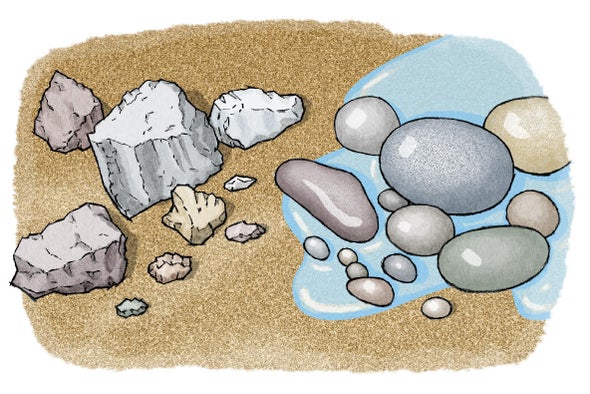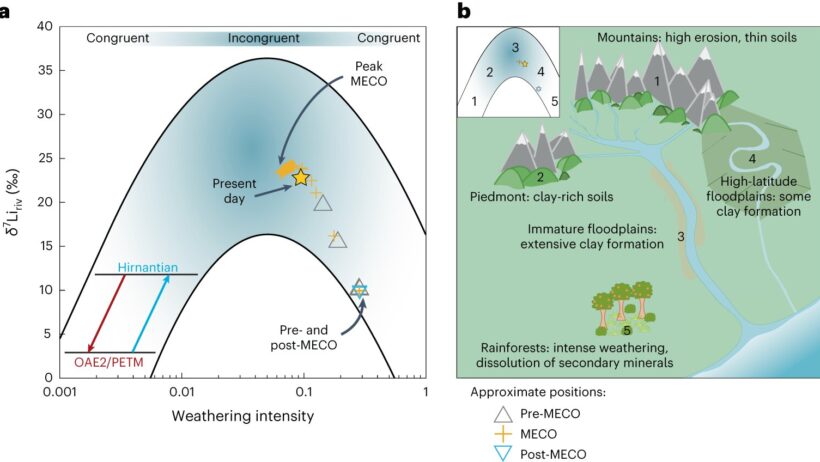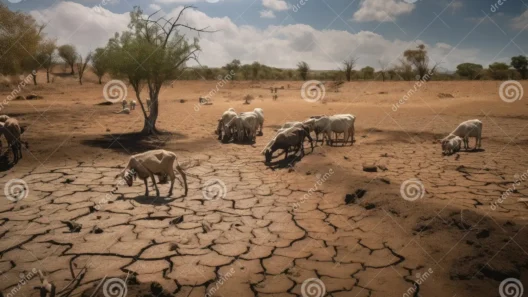Understanding the intricate interplay between climate and the weathering of rocks reveals not only the slow but continuous processes that shape our Earth but also illuminates how human-induced climate change may accelerate these natural phenomena.
Weathering, the process by which rocks break down into smaller particles, is influenced significantly by climatic conditions. Temperature, moisture, and biological activity play crucial roles in determining the rate and type of weathering a particular rock may undergo. An ambitious inquiry into this topic can provide a deeper appreciation for the dynamic systems at work beneath our feet.
At the core of rock weathering, we find two primary mechanisms: physical (or mechanical) weathering and chemical weathering. Each interacts uniquely with climatic variables, leading to a plethora of outcomes observed across different environments.
Physical weathering is primarily characterized by the mechanical breakdown of rocks into smaller fragments. Temperature fluctuations are a notable catalyst here. For example, in regions where temperatures oscillate between freezing and thawing, a process known as freeze-thaw weathering occurs. As water seeps into cracks in rocks, it expands upon freezing, exerting considerable force on the rock’s face. Repeated cycles of this freeze-thaw action can result in spectacular rock disintegration over time. This phenomenon is often pronounced in mountainous areas and places with extreme diurnal temperature variations.
Moisture also plays an integral role in physical weathering. In humid climates, the abundant precipitation can facilitate the gradual erosion of rock surfaces, particularly when combined with the abrasive action of wind-driven particles. This mechanism, often accelerated in coastal regions, reveals how climate-stressors lead to significant geologic formations such as cliffs and shorelines.
In contrast, chemical weathering involves the alteration of the mineral composition of the rock through reactions with water and atmospheric gases. This process is heightened in warmer and more humid climates, where increased temperatures typically enhance chemical reaction rates. This accelerated rate allows minerals within the rock to oxidize, hydrolyze, or dissolve more rapidly, shifting the structure’s integrity. Among the notable phenomena is the dissolution of carbonates, resulting in formations like limestone caves. These striking geological features stand as testaments to the profound impacts of a humid climate on rock compositions.
Moreover, biotic factors introduce an additional layer of complexity to the weathering process. Biological weathering occurs when organisms, such as plants, fungi, and microbes, contribute to the rock breakdown. Plant roots can penetrate cracks in rocks, exerting pressure as they grow and even releasing organic acids that contribute to chemical weathering. This interplay is particularly significant in forested areas, where the abundant foliage and subsequent organic matter contribute to soil formation and rock degradation.
As climate changes, the landscape of weathering will evolve. Changing precipitation patterns, increased temperatures, and shifting ecosystems create future scenarios that require careful analysis. Understanding these dynamics may help predict how quickly landscapes will transform. For example, in arid regions, the infrequency of rainfall and lower temperatures may mitigate weathering processes. Conversely, rising temperatures and more intense rainfalls can exacerbate weathering, leading to increased soil erosion and sediment transport, which, in turn, impacts river systems and aquatic habitats.
The anthropogenic influences on climate underscore the urgency of this inquiry. Climate change, driven largely by greenhouse gas emissions, threatens to alter established weather patterns globally. Regions traditionally classified as arid may experience prolonged wet spells, while previously humid areas may fall into patterns of drought. Such radical shifts not only reconfigure ecosystems but also transform geological processes. Consequently, the pace of weathering may quicken, leading to alterations in soil health and habitat stability, with far-reaching ecological repercussions.
Furthermore, the effects of climate on weathering extend beyond terrestrial spheres. Arctic and Antarctic regions, often perceived as inert landscapes, are currently undergoing rapid changes due to global warming. Thawing permafrost is a precursor to accelerated physical weathering, as the once-frozen ground becomes prone to erosion. The release of previously trapped organic material during this process introduces other effects, including the acceleration of carbon dioxide and methane emissions—further amplifying the greenhouse effect.
In urban settings, climate-induced weathering poses unique challenges. Infrastructure designed to withstand certain environmental conditions may falter as climate variables change. The breakdown of building materials, especially stones and concrete, can lead to increased maintenance costs and structural failures.
This inquiry into the science of rock breakdown offers a promising shift in perspective. It illuminates the interconnectedness of climate systems, geological processes, and human activities. Recognizing the delicate balance of these interactions enables societies to engage in informed decision-making, promoting sustainable practices that can mitigate adverse effects.
In conclusion, the relationship between climate and the weathering of rocks is a complex, multifaceted domain demanding further exploration. The potential ramifications on ecosystems, infrastructure, and geological stability beckon for heightened awareness and thoughtful action. As we delve deeper into the science of rock weathering, we uncover the profound implications of our environmental stewardship. By fostering curiosity and understanding, we may ultimately strive towards ensuring the preservation of our planet’s landscapes for generations to come.

www.scientificamerican.com
weathering physical ages processes little




